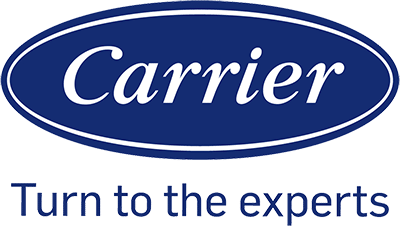Understanding Blower Motors in HVAC Systems

We recognize the importance of blower motors as they are integral to HVAC systems for ensuring efficient air circulation. Let’s explore the specifics.
Fundamentals of Blower Motors
Blower motors are the electric motors central to the HVAC system functionality. They drive the fan that circulates air throughout the ductwork in various settings, including residential, commercial, and industrial environments. The quality of a blower motor determines its efficiency and energy consumption, which directly affects the overall efficacy of the HVAC system.
Blower Motor Function:
- Air Circulation: The primary role of the blower motor is to circulate conditioned air through the living or working space.
- Efficiency: Motors that operate efficiently can lead to lower utility bills and prolong the lifespan of the entire HVAC system.
Varieties and Types of Blower Motors
Blower motors come in different types:
- Single-Speed Motors:
- Operate at one fixed speed.
- Less expensive but are less energy-efficient.
- Variable-Speed Motors:
- Can adjust their speed to control air flow.
- More energy-efficient and have better control over air quality and temperature.
Energy Consumption:
- Single-Speed: Tend to consume more energy because they run at full capacity whenever they’re on.
- Variable-Speed: Consume less energy by adjusting speeds, therefore offering more precise heating and cooling which can lead to reduced energy consumption.
Understanding these types not only helps us in selecting the right blower motor for replacement or installation but also in appreciating the role they play in our HVAC systems’ energy consumption and efficiency.
Blower Motor Role in Air Quality and Circulation

Within HVAC systems, we recognize the blower motor as a pivotal component that significantly impacts indoor air quality and airflow regulation. Our focus on this integral part sheds light on how it maintains a clean, comfortable, and well-ventilated environment.
Impact on Indoor Air Quality
Blower motors are responsible for moving air through the heating and cooling systems, and most importantly, across the air filters. Filters play a crucial role in trapping dust, allergens, and other pollutants, preventing them from recirculating throughout our homes. Consistent airflow enables the filtration system to operate effectively, continually removing particles from the air we breathe. Proper filtration, directly influenced by the blower motor’s function, can significantly reduce the presence of harmful pollutants and minimize the potential for mold growth by maintaining appropriate humidity levels.
- Key Entities:
- Air Filters: Capture and remove contaminants.
- Pollutants/Allergens: Reduced by effective filtration.
- Humidity: Managed to prevent mold growth.
Blower Motors and Airflow Regulation
Our blower motors do not solely move air for the sake of circulation. They intricately regulate airflow to ensure that air distribution is even and reaches all parts of our living space. Proper airflow regulation contributes to consistent comfort levels throughout a building and avoids the creation of hot or cold spots. In terms of ventilation, the blower motor’s ability to control the exchange of indoor and outdoor air is essential for both the removal of stale, polluted indoor air and the introduction of fresh outdoor air. This precise control also impacts the air handler’s effectiveness in maintaining the desired temperature and humidity levels.
- Key Entities:
- Airflow: Ensures even distribution of air.
- Comfort: Maintains consistent temperatures.
- Ventilation: Enables exchange with outdoor air.
- Air Handler: Manages temperature and humidity.
By understanding the intricate roles of blower motors in air quality and circulation, we are better equipped to appreciate their contribution towards a healthier and more comfortable indoor environment.
Maintaining HVAC Blower Motors

In ensuring the longevity and efficiency of HVAC systems, we focus on the proper maintenance of blower motors which is vital in preventing unexpected failures and costly repairs.
The Importance of Regular Maintenance
Regular maintenance of HVAC blower motors is crucial for preserving system performance and efficiency. By committing to scheduled check-ups, we can ensure components such as bearings and capacitors remain in optimal condition, which in turn can lead to a reduction in energy costs. Below are key maintenance steps to consider:
- Cleaning: Dirt and debris hinder performance; regular cleaning prevents buildup.
- Lubrication: Proper lubrication reduces wear on moving parts like rotors and bearings, preventing overheating.
- Inspection: Timely identification of electrical issues or worn-out parts can save on future costs.
- Professional Servicing: Having a certified technician inspect and service the motor ensures that any intricate problems are diagnosed accurately.
Common Signs of Blower Motor Issues
Being aware of warning signs can help us address problems with blower motors before they escalate. Here are common symptoms that indicate a need for troubleshooting or possible repairs:
- Unusual Noises: Grinding or screeching may point to malfunctioning, worn-out bearings or a faulty rotor.
- Weak Airflow: This can signify a failing motor or capacitor needing attention.
- Intermittent Operation: Frequent stops and starts might indicate electrical issues or motor failure.
By recognizing these signs and acting promptly, we maintain the blower motor’s integrity and functionality.
Improving HVAC Energy Efficiency with Blower Motors

Selecting the right blower motor is crucial for optimizing energy efficiency and reducing utility costs in HVAC systems. We will discuss energy-efficient blower motor options and strategies for decreasing energy consumption.
Energy-Efficient Blower Motor Options
The type of blower motor installed in an HVAC system significantly impacts energy efficiency. Variable-speed blower motors stand out for their ability to adjust speed based on system demand, leading to reduced energy consumption. Compared to traditional motors, Electronically Commutated Motors (ECM) are superior, using integrated electronic controls to improve efficiency. These motors can save up to 75% in energy and also maintain a consistent airflow, which prevents system overworking. A motor’s horsepower should match the size of the HVAC system to avoid unnecessary power use.
| Motor Type | Energy Savings | Feature |
|---|---|---|
| ECM | Up to 75% | Adjustable speed |
| Variable-speed | Depends on usage | Reduces airflow |
Reducing Energy Consumption in HVAC Systems
We can minimize energy costs by incorporating regular inspections and maintenance of HVAC systems. Keeping blower motors dust-free ensures optimal performance, preventing increased energy bills due to inefficiency. It’s also imperative to inspect the motor’s wiring and connections as faulty components can lead to higher electricity use. Strategically reducing the workload on HVAC systems, like installing programmable thermostats, complements the efficiency of a variable-speed blower motor, optimizing performance, and resulting in lower utility costs.
Integration and Control of Blower Motors in HVAC
Blower motors are integral to HVAC systems, managing airflow for heating, cooling, and humidity control, ensuring a comfortable indoor environment.
Thermostat and Control Unit Interactions
We recognize that the thermostat is the interface through which occupants set their desired temperature, transitioning this input to the control unit. This unit directs the blower motor, activating it in response to temperature discrepancies. Heating or cooling demands trigger the furnace or air conditioning systems, while the blower motor modulates the airflow through the ductwork to various vents.
- Operation Sequence:
- User sets the temperature on the thermostat.
- The control unit receives the signal.
- Furnace or heat pump engages for heating.
- AC unit is activated for cooling.
- Blower motor adjusts airflow as per requirements.
The precise control ensures that room temperature and humidity are maintained according to user settings, prioritizing indoor comfort.
Installation and Configuration of Blower Motors
Correct installation and configuration of blower motors are foundational to an efficient HVAC system. We ensure that blower motors are adequately sized for the system’s capacity and compatible with the furnace, air conditioning unit, and ductwork.
- Checklist for Installation:
- Compatible motor rating with HVAC units.
- Correct wiring to control unit and thermostat.
- Secure mounting in the furnace or air handler.
- Verification of correct rotation and speed settings.
Once installed, we configure the blower motor’s speed settings for optimal airflow, enhancing AC maintenance and promoting longevity. The result is a responsive system adept at maintaining the desired indoor environment.




